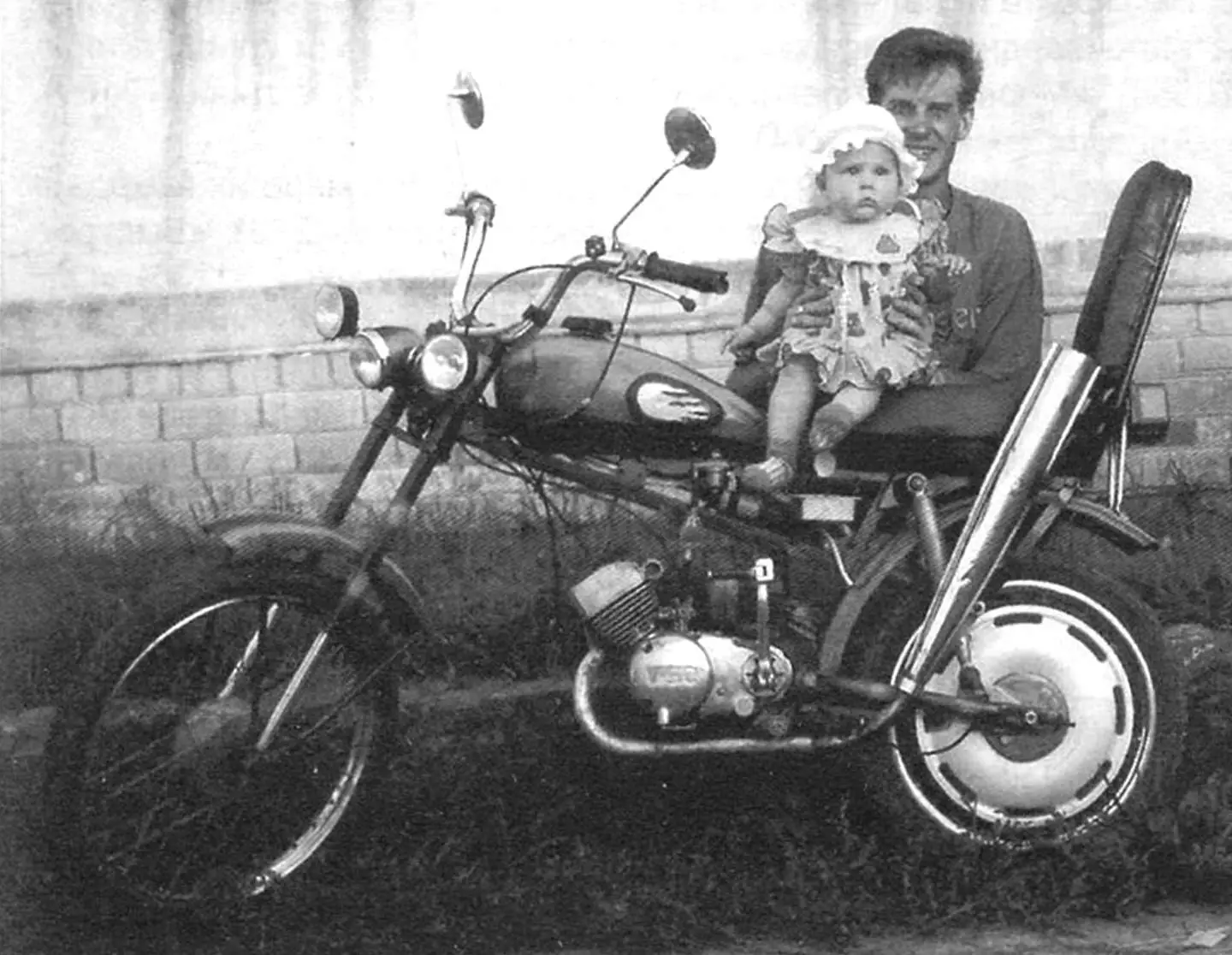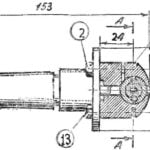Since childhood, I dreamed of having a chopper — a stylish and respectable motorcycle that would feel confident on the road and gracefully take sharp turns. Finally, my dream has partly come true (or rather, I made it happen myself) — and now I own such a machine. It may not be a full-sized chopper, but more like a scaled-down version of it, yet riding it still brings me plenty of joy.
I built my mini-chopper based on a “Karpaty-Lux” mokik, using some parts from the light moped “Riga-13” and the motorcycle “Minsk” M-104, with a touch of my own imagination, of course. The bike turned out stylish and “horned.”
Now, let’s take a closer look.
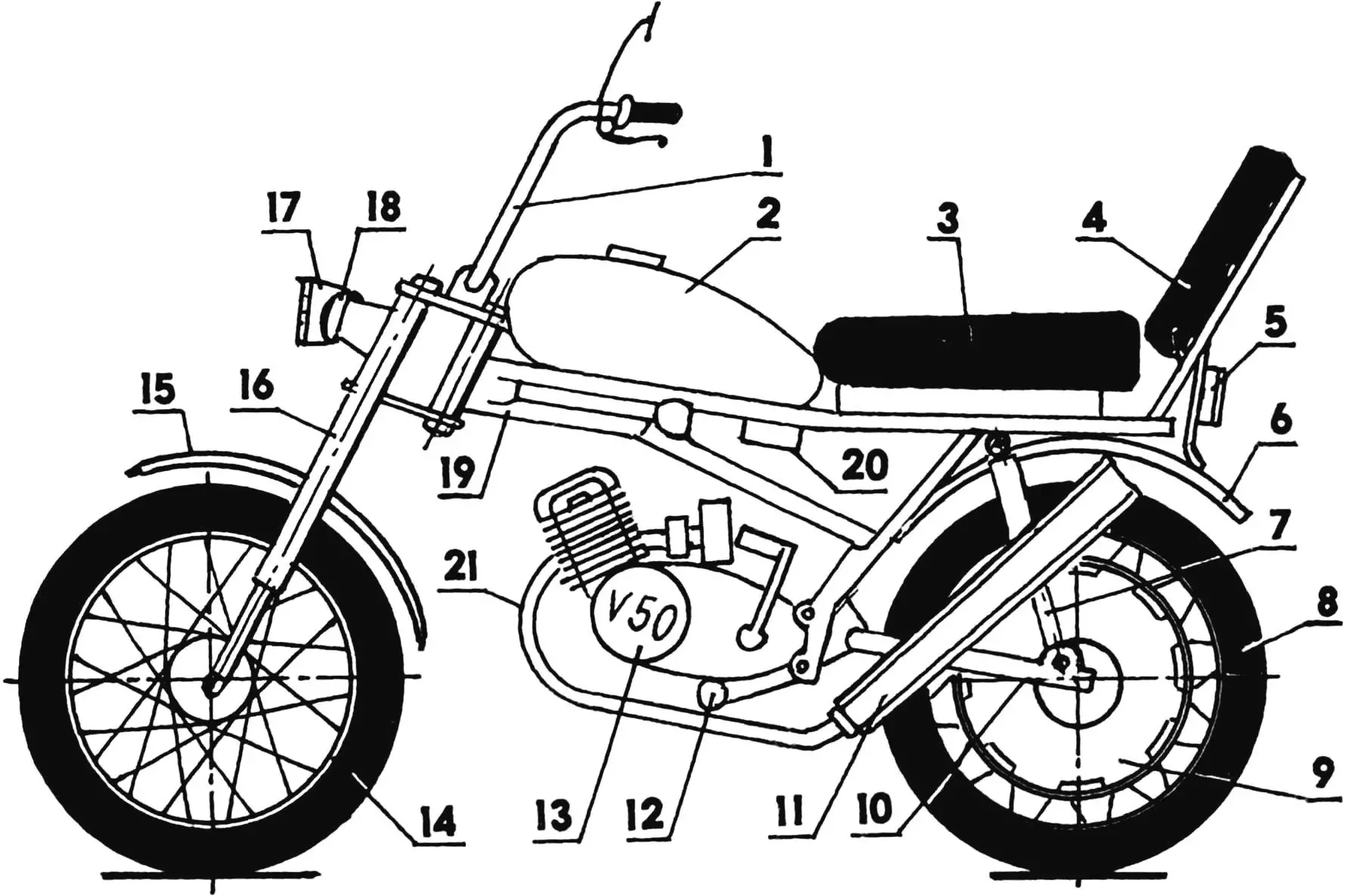
1 — handlebar (from “Riga-13” moped); 2 — 11 L fuel tank (from “Minsk” motorcycle); 3 — seat (from “Karpaty-Lux” mokik); 4 — backrest (homemade); 5 — rear light (from “Riga-13” moped); 6 — rear fender (from “Minsk” motorcycle, modified); 7 — shock absorber (from “Karpaty-Lux” mokik, 2 pcs.); 8 — rear wheel (from “Karpaty-Lux” mokik); 9 — wheel rim (automotive, 2 pcs.); 10 — swingarm fork (from “Karpaty-Lux” mokik); 11 — muffler (from “Riga-13” moped); 12 — kickstand (from “Karpaty-Lux” mokik); 13 — V-50 power unit; 14 — front wheel (from “Riga-13” moped); 15 — front fender (from “Minsk” motorcycle, modified); 16 — front fork (from “Karpaty” mokik, extended); 17 — main headlight (from “Riga-13” moped); 18 — additional headlights (from road bicycle, 2 pcs.); 19 — frame (from “Karpaty-Lux” mokik); 20 — electronic unit KET, 6V; 21 — exhaust pipe (from “Karpaty-Lux” mokik, extended)
The frame was taken from the “Karpaty-Lux” mokik. I cut off the standard tank mounts and drilled two 6 mm holes for the “Minsk” M-104 fuel tank lugs.
I left the original “Karpaty” seat, but moved its mounting brackets 30 mm backward (since the “Minsk” tank is longer than the “Karpaty” one). The stock luggage rack was removed, and in its place, I attached a seat backrest. Its frame was made from the “Riga-13” luggage rack. A plywood base was cut out, drilled with two 4.2 mm holes, and bolts were inserted, their heads welded to a steel strip. This was done so that the bolts wouldn’t spin when attaching the backrest, as they couldn’t be held from the opposite side due to the upholstery. Foam was added, covered with leatherette, and the backrest was assembled.
The front fork was assembled from two others. The main fork and springs came from the “Karpaty” mokik, while the extensions were taken from the “Riga-13” moped fork. Heads from “Riga-13” were screwed into the springs, and rectangular holes were cut in the bridge to prevent the front wheel from misalignment. (A drawing of the bridge is provided for those who may want to make one themselves).
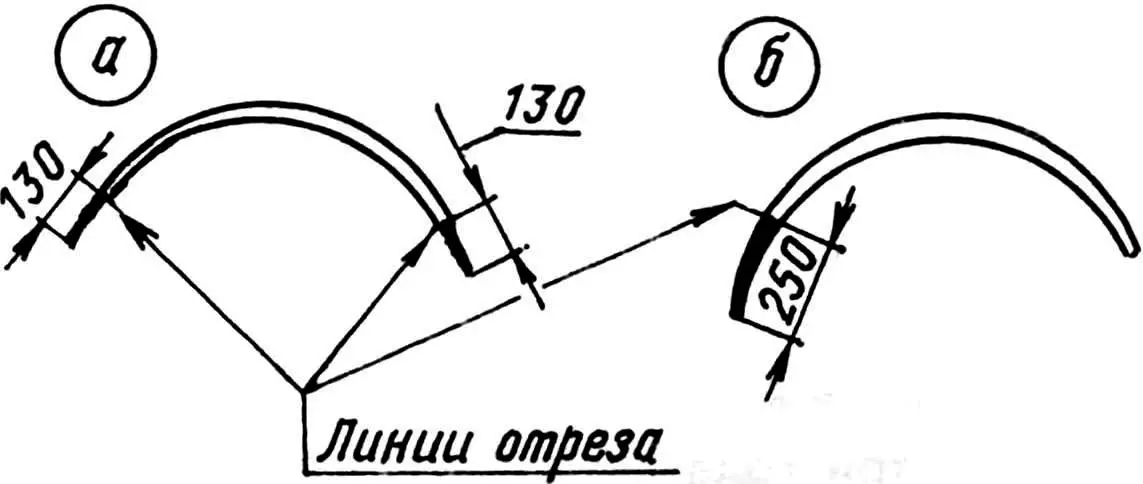
a — front; b — rear
The front wheel came from the “Riga-13” moped, and the rear from the “Karpaty-Lux” mokik. Both front and rear fenders came from the “Minsk” K-125 motorcycle, cut as shown in the figure.
The front headlight was from the “Riga-13” moped. To mount it, I slightly bent the stock fork brackets. Springs from a bicycle seat were put onto the headlight bolts, with additional headlights mounted on their ends. The rear light, from the “Riga-13,” was attached to the rear fender with two brackets.
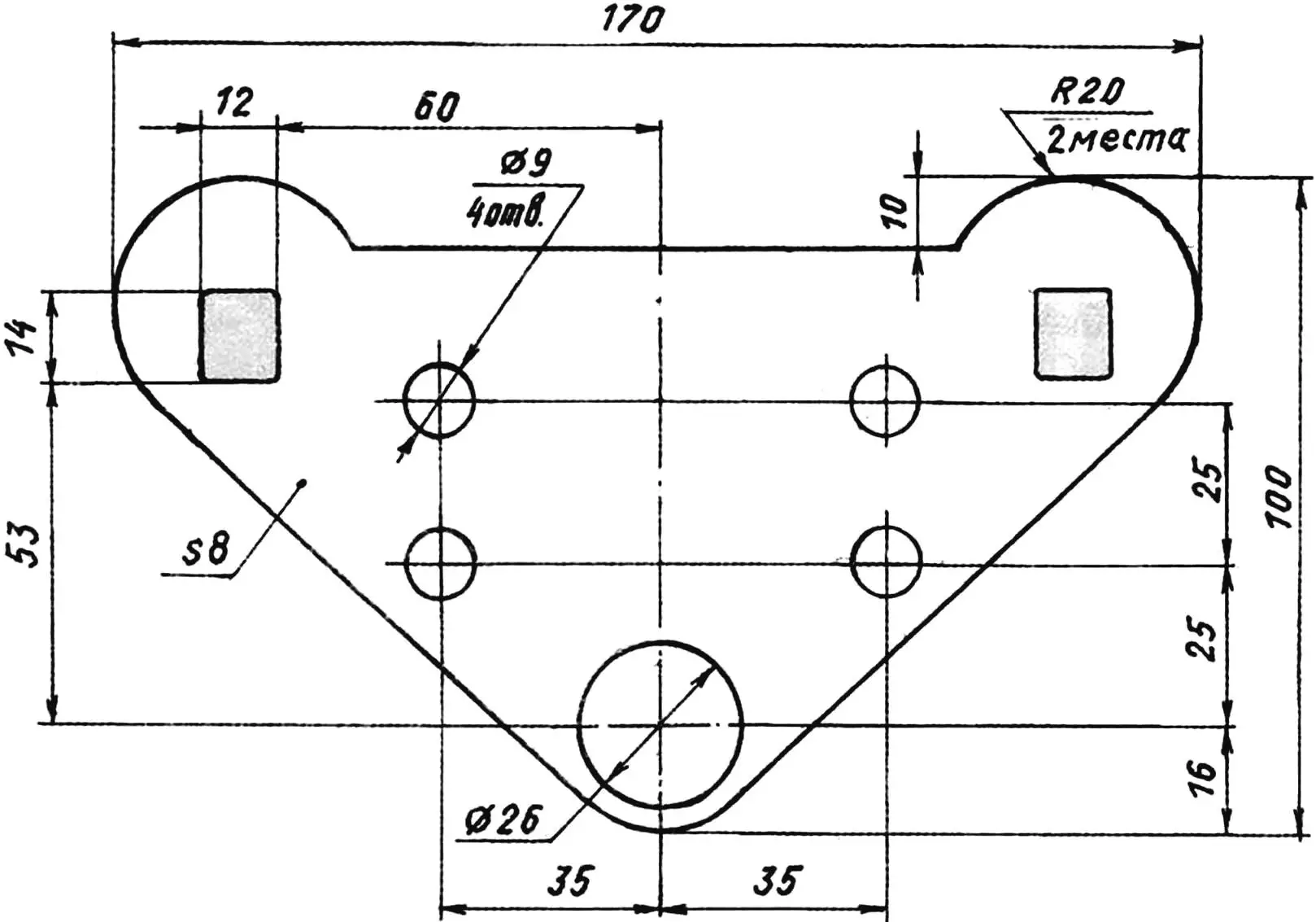
The exhaust pipe was also made from two others. The front section is standard, from the “Karpaty-Lux” mokik, but extended and bent upward at the end. A smaller diameter pipe was welded to it, and then a muffler from the “Riga-13” moped was attached. Muffler brackets were bent from 3 mm thick, 40 mm wide steel plate. One end of the muffler is bolted to the rear fender on the frame, the other to the stock pipe mount. The photo shows the original pipe position. Now it sits slightly lower so that exhaust fumes don’t hit the rider while stationary.
The engine is standard — a V-50 with manual gear shifting. The clutch housing and ignition block covers were polished with felt and GOI paste. A fine fuel filter from a passenger car was added into the fuel line, which makes it possible to ride longer without cleaning the carburetor, which in summer quickly clogs with dust and rust from the tank.
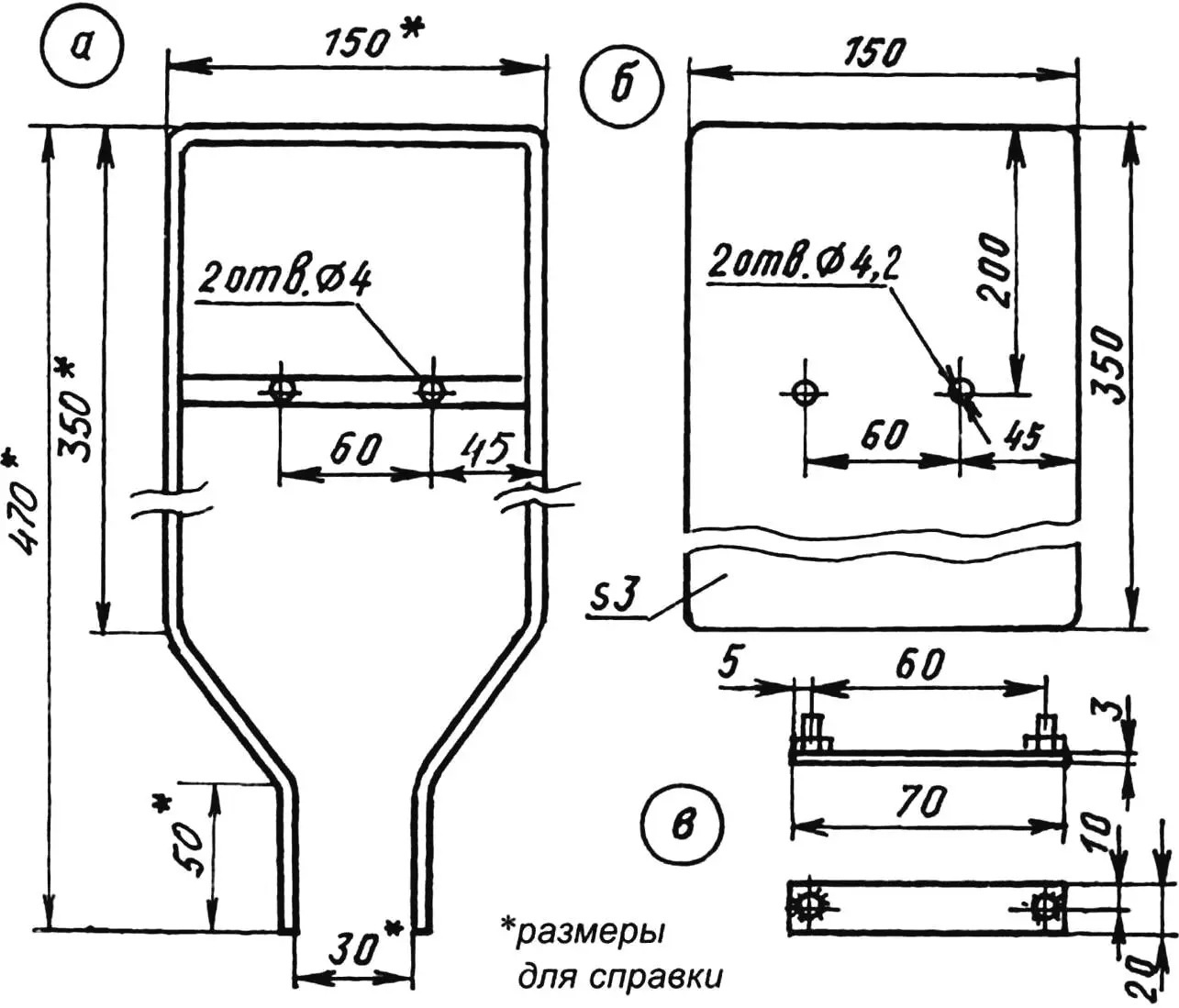
a — frame (luggage rack from “Riga-13” moped); b — base (plywood s3); c — M4 bolts with plate
On the rear wheel, I installed automotive hubcaps on both sides, cutting central holes to fit the wheel hub diameter. Rear-view mirrors were also installed, giving the chopper a nearly “Harley-like” appearance.
V. Belousov
